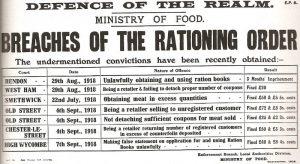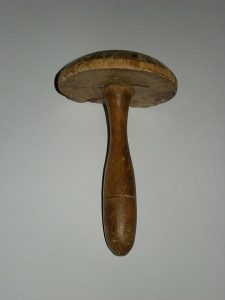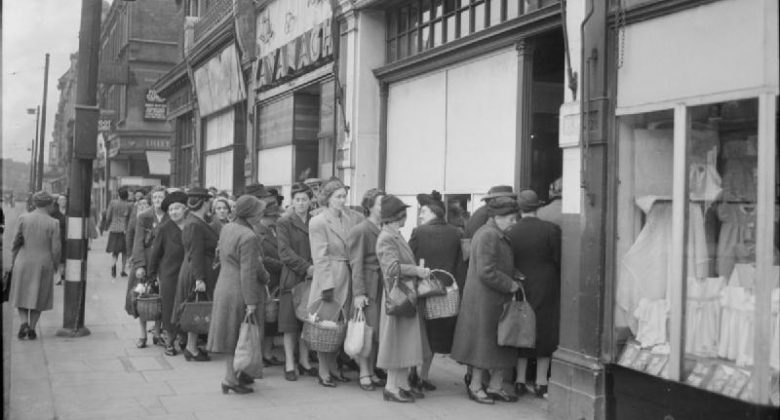Most people will be familiar with the rationing that was implemented in January 1940 and the coupon books that were issued to ensure that everyone had the same. But did you know that rationing had first been introduced during WW1 when our home production was hit by the loss of men and horses who were sent to the front and the German targeting of our supply ships from abroad? Many farmers at the time had to plead to be left one horse to help them work their land. Food queues became an everyday part of life and children were often sent to queue rather than being sent to school. As a result of this, ‘School Meals’ were introduced to ensure children attended school, and ‘Daylight Saving’ was brought in to give more daylight in the evenings for those left to work the land. Pub opening hours were restricted in case alcohol consumption interfered with the war effort, and pubs could only sell alcohol between the hours of 12.30–14.40 and 18.30-21.30.

WW2 saw the rationing of pretty much everything other than fruit, vegetables and bread. Although the price of bread increased over the years, bread was not rationed until 1946 after a terrible harvest. Meat, cheese, eggs, fats, bacon, sugar, tea, preserves and sweets were sold and rationed by weight or unit, but this could vary according to availability. Items such as tinned goods, dried fruit, cereals and biscuits also became rationed on a points system, again according to availability. Everyone was encouraged to “Dig for Victory” and public parks were turned over to the cultivation of fruit and vegetables. Lemons and bananas were no longer available and any oranges were kept for children and pregnant women.
As the war progressed rationing was brought in for clothing in 1941, domestic fuel and coal in 1942, soap in 1945. Petrol had been rationed since the onset of the war but by 1942 petrol for private use was withdrawn. Paper was allocated by the government for essential publications and some books. Clothes became very utilitarian and “Make do and Mend” become the catchphrase. Socks were darned and children’s clothes handed down. Wrapping paper was saved and re-used, that is of course if you could get any. When the war did come to an end rationing did not. All rationing finally ended in July 1954 nearly 9 years later.

Here at the museum we welcome groups of schoolchildren, who are often surprised and fascinated to learn that things we now take for granted were once in short supply. This year the museum received a lovely set of brass scales and imperial weights, which were kindly donated by a local lady, for us to use with school groups to demonstrate just how little of some of the restricted items people were allowed each week during WW2.

While the museum welcomes monetary donations to support us, and items of historic value to enhance our collection, we are also delighted to accept donations of interesting objects to use as handling items for school groups, to educate and inspire them to learn more about their important past. You can find out more about donating items to support us here.
Click here to find out more about the museum’s Research Facilities.

